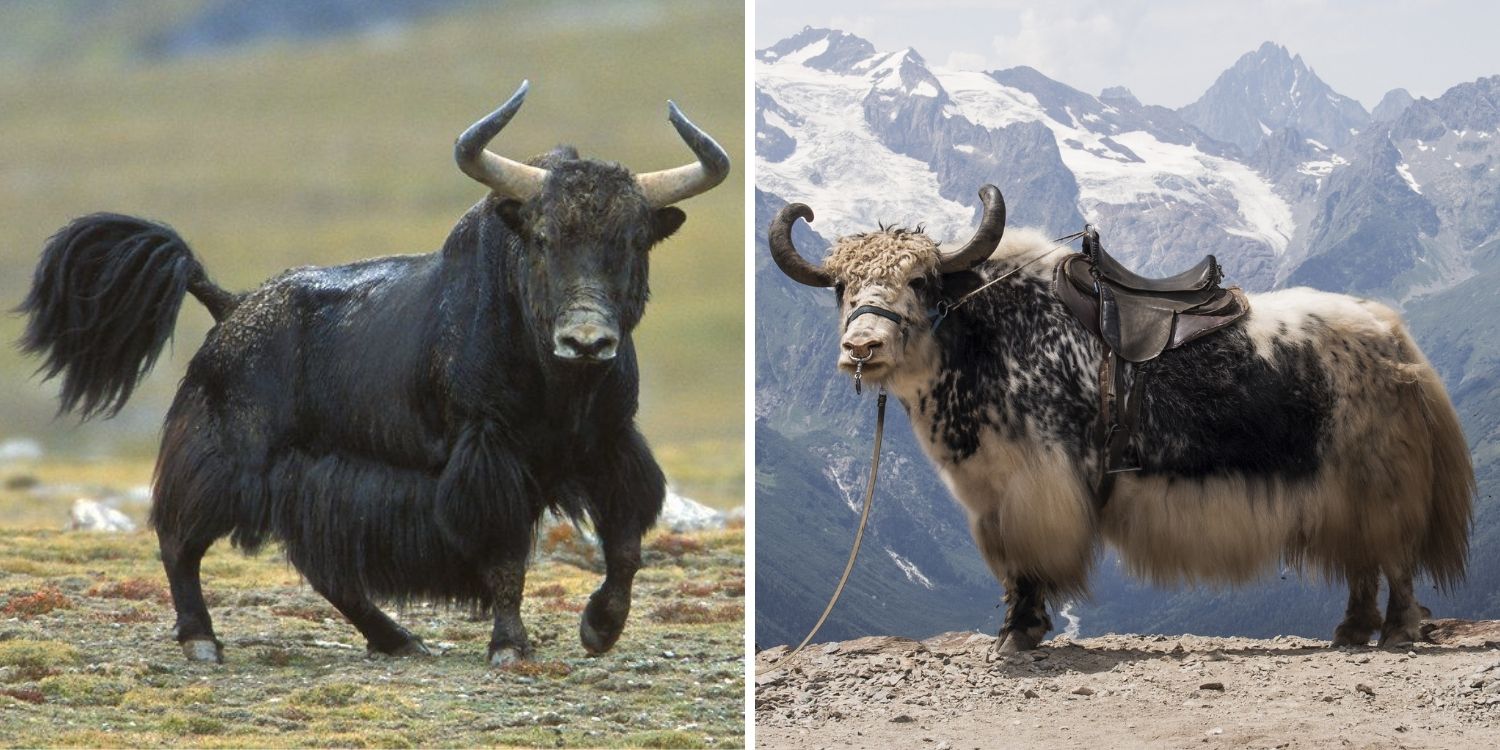
Yaks are the iconic beasts of the highlands—thick-coated, strong-backed, and built for life in the clouds. But did you know there are two kinds? The domestic yak and the wild yak may look similar at first glance, but these close cousins lead very different lives. Let’s break down the differences between these two high-altitude heavyweights.
The Basics
- Domestic Yak (Bos grunniens):
Tamed and bred by humans for thousands of years, these yaks are central to life in the Himalayas, Tibet, Mongolia, and beyond. - Wild Yak (Bos mutus):
A rare and elusive species, the wild yak roams remote parts of the Tibetan Plateau. It’s larger, tougher, and far less accustomed to human presence.
Key Differences
| Feature | Domestic Yak | Wild Yak |
|---|---|---|
| Size | Smaller, males average 1,200 lbs (540 kg) | Larger, males can exceed 2,000 lbs (900 kg) |
| Temperament | Docile, used to humans | Wary, aggressive if threatened |
| Coloration | Wide range: black, brown, white, spotted | Mostly dark brown to black |
| Horns | Shorter and more varied | Long, sweeping horns |
| Coat | Shaggy, but varies by breed | Thicker and denser for harsh climates |
| Use by Humans | Milk, meat, wool, transport, fuel | Not domesticated—occasionally hunted |
| Status | Widespread and essential in mountain life | Vulnerable, with shrinking habitat |
Interbreeding
Domestic and wild yaks can interbreed, and in some regions, this happens naturally. While this increases genetic diversity in domestic herds, it poses a challenge for conserving pure wild yak populations. Conservationists are working to protect the genetic integrity of wild yaks in remote areas.
Habitat and Range
- Domestic yaks are found across Central Asia, wherever people live in high-altitude areas.
- Wild yaks stick to the most remote, windswept corners of Tibet and western China, far from roads and villages.
Conservation Status
The wild yak is listed as “Vulnerable” by the IUCN. Its main threats are:
- Habitat degradation
- Hunting
- Hybridization with domestic herds
Meanwhile, domestic yaks are thriving and remain vital to highland economies and cultures.
Final Thoughts
While domestic and wild yaks share ancestry and alpine strength, they lead starkly different lives. One is a partner in human survival, the other a vanishing symbol of the wild. Understanding both helps us appreciate the richness—and fragility—of life on the roof of the world.
Disclaimer: This blog post is for edutainment purposes only and may not be entirely accurate.






